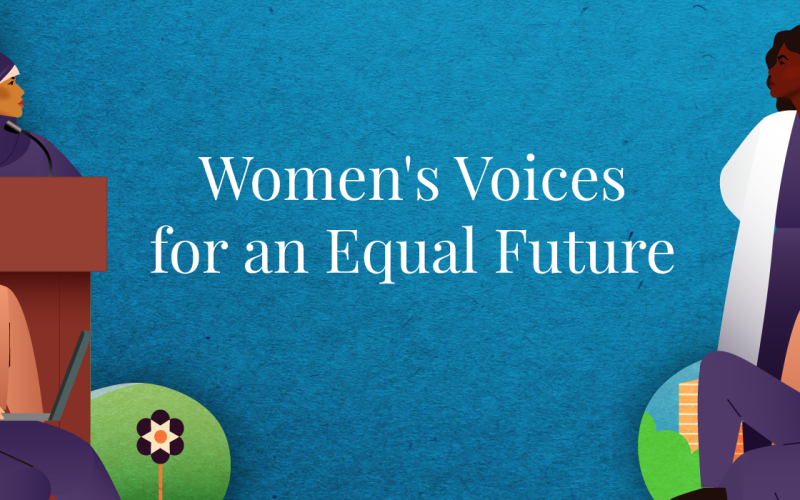Introduction
In today’s world, empowering women is essential for achieving true gender equality. When women have equal access to education, work opportunities, and leadership roles, whole communities thrive. Women empowerment not only improves lives but also boosts economies and strengthens societies. This article explores why empowering women matters, the key areas of progress, and the steps that individuals, organizations, and governments can take to make gender equality a reality.
The Importance of Gender Equality
Gender equality means that women and men have the same rights, responsibilities, and opportunities. It’s more than a women’s issue—it affects everyone.
- Economic Growth: Countries with smaller gender gaps in the workforce grow faster.
- Health and Well-Being: Equal access to healthcare leads to healthier families.
- Social Stability: Gender-balanced societies show lower rates of violence and poverty.
By aiming for gender equality, we create fairer systems and unlock the full potential of half the world’s population.
Education as a Key to Empowerment
Education is the foundation of women empowerment. When girls can attend school and pursue higher learning, they gain skills and confidence.
- Early Childhood Education: Investing in pre-school programs ensures that girls start strong.
- Secondary School Access: Completing high school opens doors to better jobs and leadership roles.
- Higher Education and Vocational Training: Scholarships and technical training prepare women for diverse careers.
Programs that provide books, uniforms, and safe transport improve attendance. When girls learn, they are more likely to become community leaders, entrepreneurs, and innovators.
Economic Empowerment & Workforce Inclusion
Financial independence is a powerful driver of gender equality. Women who earn their own income have more decision-making power at home and in society.
- Equal Pay for Equal Work: Closing the wage gap boosts household incomes and reduces poverty.
- Entrepreneurship Support: Microloans and business training help women start and grow small enterprises.
- Skill Development: Access to technology and vocational programs enables women to join high-growth sectors.
- Flexible Work Policies: Paid leave, childcare support, and telework options help women balance work and family.
When women participate fully in the economy, overall productivity rises and the benefits spread across communities.
Political Participation and Leadership
Women’s voices are critical in decision-making bodies. Yet only about a quarter of national parliamentarians worldwide are women.
- Electoral Quotas: Setting minimum percentages for women candidates boosts representation.
- Leadership Training: Mentorship and networking programs prepare women for public office.
- Civic Engagement: Encouraging women to vote, run for local councils, and join boards strengthens democracy.
Having women in leadership roles leads to more inclusive policies on health, education, and family welfare.
Social and Cultural Change
Cultural norms often limit women’s roles. Shifting mindsets is vital for long-term progress.
- Media Representation: Positive stories and diverse role models challenge stereotypes.
- Community Dialogues: Workshops and town halls allow people to discuss gender roles openly.
- Men as Allies: Engaging men in gender-equality efforts reduces resistance and promotes shared responsibility.
When societies value women’s contributions equally, harmful practices like child marriage and gender-based violence decline.
The Role of Men and Allies
True gender equality requires support from all genders. Men can play key roles as advocates and partners.
- Active Listening: Understanding women’s experiences helps men recognize inequality.
- Household Sharing: Participating equally in childcare and housework lightens the burden on women.
- Mentorship: Male leaders can mentor and sponsor talented women in their fields.
- Public Advocacy: Speaking out against sexism and supporting policies that promote equality amplifies impact.
Allies use their voices and influence to create environments where women can succeed.
Policies and Global Initiatives
Governments and international bodies drive large-scale change through policies and programs.
- Convention on the Elimination of All Forms of Discrimination Against Women (CEDAW): A global treaty that sets standards for gender equality.
- Sustainable Development Goals (SDG 5): The United Nations’ goal to “achieve gender equality and empower all women and girls.”
- National Laws: Equal-pay acts, anti-discrimination regulations, and parental leave policies protect women’s rights.
- Public-Private Partnerships: Collaboration between governments, NGOs, and businesses funds education, healthcare, and entrepreneurship programs.
When policies support women’s rights, individual efforts gain momentum and systemic barriers fall.
Measuring Progress and Staying Accountable
Tracking data ensures that gender-equality initiatives deliver results:
| Indicator | Recent Global Stats | Target |
|---|---|---|
| Women in Parliament | 26.5% seats | 50% |
| Secondary School Enrollment | 90% of girls | 100% |
| Gender Wage Gap | Women earn 20% less on avg | 0% |
| Women in Senior Leadership Roles | 29% of management positions | 50% |
Regular reporting, audits, and public dashboards keep stakeholders accountable and highlight areas needing extra focus.
Success Stories: Real-World Examples
- Rwanda: Leads the world with over 60% women in parliament, driving progressive social policies.
- Bangladesh: Microcredit programs funded millions of women entrepreneurs, lifting families out of poverty.
- Sweden: Generous parental-leave policies encourage shared childcare and close the workplace gender gap.
These examples show that committed action, backed by policy and community support, yields tangible gains for women and societies.
Challenges and the Road Ahead
Despite progress, challenges remain:
- Persistent Stereotypes: Deeply rooted beliefs about gender roles slow change.
- Violence Against Women: One in three women experience physical or sexual violence in their lifetime.
- Digital Divide: Girls in low-income areas have less access to the internet and online learning.
- Crisis Impact: Conflicts, pandemics, and economic downturns often worsen gender inequality.
Addressing these issues requires continuous effort, flexible strategies, and investment in women’s health, education, and safety.
How You Can Make a Difference
Everyone can play a role in empowering women:
- Educate Yourself: Read, attend workshops, and follow reliable sources on gender issues.
- Support Women-Led Businesses: Buy products and services from women entrepreneurs.
- Volunteer or Donate: Work with local NGOs that focus on girls’ education or women’s shelters.
- Speak Up: Challenge sexist jokes or practices at work and in social settings.
- Mentor a Girl: Share your skills and guidance to help young women reach their goals.
Small actions add up. When individuals commit, communities transform.
Conclusion
Empowering women is the foundation of true gender equality. By investing in education, economic inclusion, leadership, and cultural change, we build fairer, stronger societies where everyone can thrive. Governments set the stage with policies and global goals, while communities and individuals drive progress on the ground. As you join the movement—whether as an educator, ally, or advocate—you help shape a future where women’s talents and voices are valued equally. Together, we can achieve lasting change and unlock the full potential of all people for a more just and prosperous world.










